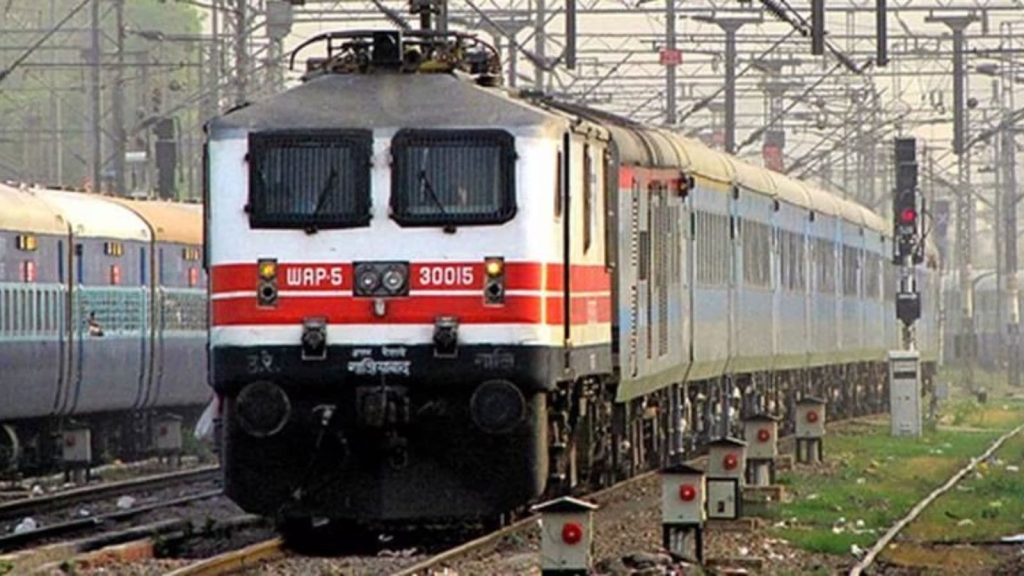Indian Railways on Track: Massive Recruitment, Enhanced Safety, and Modernization
New Delhi – The Ministry of Railways has unveiled impressive statistics showcasing a significant push towards filling vacancies, enhancing passenger safety, and modernizing its infrastructure. In a detailed response to a query in the Lok Sabha, the government has outlined a multi-pronged strategy that includes large-scale recruitment drives, the strategic re-engagement of retired employees, and a host of technological upgrades to minimize accidents and improve operational efficiency.
Filling the Gaps: A Recruitment Drive of Unprecedented Scale
Addressing concerns over vacant posts, the Ministry of Railways has highlighted that recruitment is a continuous and dynamic process. Here’s a look at the numbers:
- Over 5.08 lakh recruitments were made between 2014 and 2024, a significant increase from the 4.11 lakh recruitments in the preceding decade (2004-2014).
- In the period from 2020 to 2022 alone, examinations were conducted for over 2.37 crore candidates, leading to the recruitment of 1,30,581 individuals.
- Looking ahead, the Ministry has introduced an annual recruitment calendar for 2024, notifying 92,116 vacancies across various posts, including Assistant Loco Pilots, Technicians, and roles in the Railway Protection Force (RPF).
To meet immediate operational needs, Divisional Railway Managers have been empowered to re-engage retired railway employees on a temporary basis, ensuring that critical developmental and operational work continues without interruption.
A Paradigm Shift in Safety: Drastic Reduction in Train Accidents
Safety remains the paramount priority for Indian Railways, and the results of sustained efforts are evident in the sharp decline in consequential train accidents.
(Image suggestion: A chart visualizing the decline in train accidents as detailed in the report)
Key Safety Statistics:
- The number of consequential train accidents has plummeted from 1,711 between 2004-14 to 678 between 2014-24.
- The annual average of such accidents has dropped from 171 per year to just 31 in 2024-25, with a further reduction to 3 in 2025-26 (up to June).
- The crucial safety metric of Accidents Per Million Train Kilometers (APMTKM) has improved by approximately 73%, reducing from 0.11 in 2014-15 to 0.03 in 2024-25.
Also read: Modern Coach Factory Raebareli: Staffing, Bonuses & Worker Welfare | Lok Sabha QA
Corrective Measures and Technological Advancements
The Ministry has refuted the notion that staff shortages are the primary cause of accidents, instead pointing to a comprehensive safety overhaul. The investment in safety-related activities has more than doubled, from ₹39,463 crore in 2013-14 to a budgeted ₹1,16,470 crore for 2025-26.
Technological and infrastructural upgrades include:
- Kavach Anti-Collision System: This indigenous Automatic Train Protection (ATP) system has been deployed on 1,548 km of the network, with work progressing rapidly on the Delhi-Mumbai and Delhi-Howrah corridors.
- Electronic Interlocking: Implemented at 6,635 stations to minimize human error.
- Track and Rolling Stock Modernization:
- 1.43 Lakh Km of high-quality 60kg rails have been used since 2014.
- 42,677 modern LHB coaches have been manufactured, an 18-fold increase, to enhance passenger safety.
- All unmanned level crossings on the Broad Gauge network were eliminated by January 2019.
- Enhanced Maintenance Practices: The use of Ultrasonic Flaw Detection (USFD) testing has more than doubled, leading to a 90% reduction in weld failures and an 88% reduction in rail fractures.
The Road Ahead: A Modern, Safe, and Efficient Railway
The data presented by the Ministry of Railways paints a clear picture of an organization in the midst of a transformative journey. Through a combination of massive recruitment drives, strategic use of experienced personnel, and a deep-seated commitment to safety through technological adoption, Indian Railways is positioning itself for a future of enhanced efficiency and unparalleled safety. The introduction of a predictable recruitment calendar is a welcome move for aspirants, promising a steady stream of opportunities and a more streamlined path to joining one of the world’s largest railway networks.

